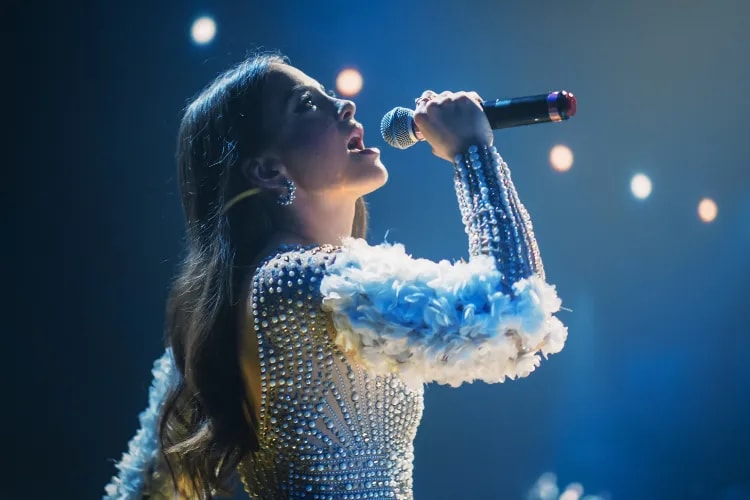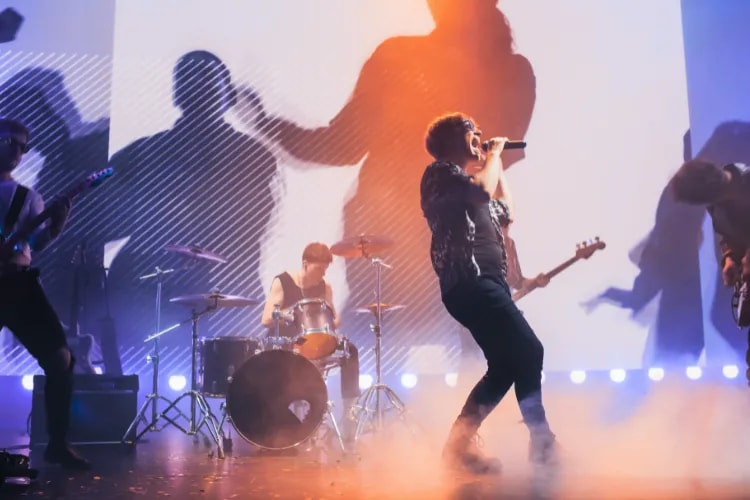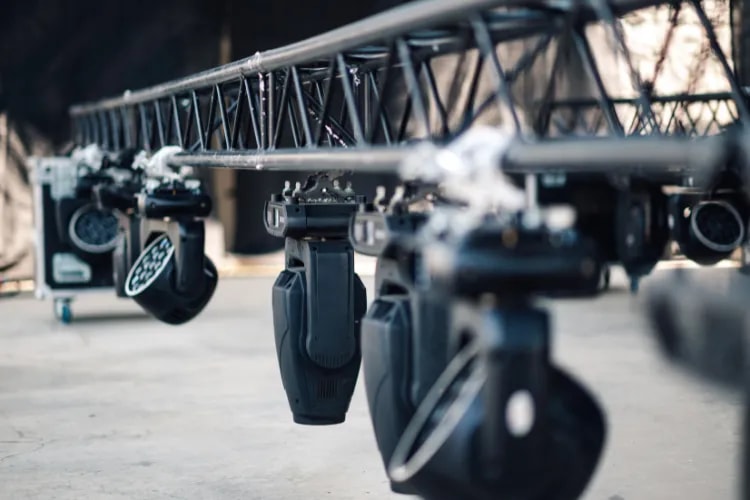
When you’re booking artists, great negotiation is the difference between a sold‑out, on‑budget night and a stressful scramble that eats your margin. Demand is still strong and fan expectations are higher than ever—yet budgets are tight and price sensitivity is real. Industry data shows average ticket prices hitting new highs, which compresses room for error and makes disciplined deal‑making essential. Pollstar’s 2024 year‑end review, for example, cited record average ticket prices. The takeaway: the smartest organizers now negotiate not just a number but a whole package—balancing guarantees, production, risk and value.
In this guide, you’ll find practical negotiation tips for booking artists—how to research market value, build a persuasive offer, structure risk‑balanced terms, and use creative tradeoffs to secure the talent you want at the right price.

The Loopyah Content Team shares expert insights, practical guides, and industry updates to help event organizers create unforgettable experiences and stay ahead in the event planning world.
growth
Negotiation goes smoother when you genuinely understand the artist’s reality. Their quoted fee is shaped by a mix of demand, logistics, and workload—not just star power. If you want more favorable terms, start by framing the conversation in a way that respects their work and reduces their risk.
Core drivers of an artist’s quote:
Market demand and timing: recent press, social spikes, new releases, and routing windows can push prices up—or down if there’s a soft spot in the calendar.
Venue and market size: larger capacities and strong historical sales justify higher asks; smaller rooms or first‑time markets temper them.
Travel, crew, and production: flights, ground, hotels, per diems, backline, and crew payroll can dwarf differences in the base fee.
Hospitality and technical riders: special gear, extensive hospitality, or strict stage specs add cost (and risk) if you don’t plan ahead.
Build an "all‑in" estimate early. Don’t just budget the guarantee—model the total engagement cost so you know what you can afford and what you can trade. Map out line items such as:
Backline (rentals vs. sharing with other acts), sound, lights, and tech labor
Travel (flights, baggage/oversize, ground), hotels (rooming list), and per diems
Hospitality (catering, riders, buyouts), security, and stagehands/porterage
Insurance, visas (if needed), content capture, and contingency
Finally, research recent market value and comps. Look at similar capacity shows in your region, recent tour averages, and the artist’s last local play and ticket price. Triangulating fee expectations helps you avoid overpaying in soft‑demand windows and keeps counters credible.
Before you email an agent, define what success looks like. Are you trying to drive press, reward sponsors, sell out a new room, or anchor a series? Set a realistic talent budget and decide which artists are non‑negotiable versus optional. Then, align production spend to support that priority.
A simple prioritization process:
Define your capacity, target gross, and ticket‑price range.
Rank talent by strategic value: “need‑to‑have,” “nice‑to‑have,” “emerging bets.”
Allocate a base guarantee range to each tier (with a small contingency).
Identify production tradeoffs that free cash for guarantees (shared backline, in‑house lighting, leaner hospitality).
Set a hard walk‑away number per artist and a show‑level reservation point.
For deeper budget planning, see our guide on building an event budget and how to ladder spending to goals. If you’re modeling multiple rooms or seat types, our event software helps you run scenarios across capacities, price tiers, and fees so your talent budget remains grounded in reality.
Case example: You’re programming a 2,000‑cap city festival. You earmark 45% of projected gross for talent, but you can reclaim 5–8% by leaning on in‑house sound and a shared drum/backline plot across the top three acts. That savings funds a better headliner offer without raising ticket prices.
Agents and managers move fast. Arrive prepared with exactly what they need to assess fit and respond quickly. Your goal: make it easy to say yes.
Gather this information before you reach out:
Event specifics: date(s), city/venue, capacity, age restrictions, curfew, and tech capabilities.
Audience profile: past attendance, genre fit, and any superfans or membership communities you can mobilize.
Marketing reach: email list size and open rates, social followers, paid budget, and media partners; outline your go‑to‑market and content plan.
Commercial model: expected ticket price range, fees, settlement style, and any sponsor integrations.
Logistics: travel/hotel plan, production plot, load‑in/out, and who your point people are.
Package your offer with a clear value proposition. Beyond money, show why the show matters: exposure to superfans, content capture opportunities, aligned sponsors, or a strategic market moment. A short PDF one‑sheet works; include logo lockups, dates, demo snapshots, and visuals. You’ll look professional and lower perceived risk.
“Before you get to yes with others, negotiate with yourself—know your goals, your walk‑aways, and the trades you’re willing to make.”
Arrive with a menu of negotiables, not just a fee number:
Fee vs. backend structure: guarantee only, guarantee vs. percentage after expenses, scaled bonuses for sell‑through or content deliverables.
Rider and hospitality: substitutions, buyouts, and shared assets to control cost while protecting comfort and quality.
Marketing deliverables: artist socials, meet‑and‑greet, bite‑sized content, or local press that you can help arrange.
Recording/streaming rights: capture terms and content usage windows (sometimes more valuable than a small fee delta).
Radius/exclusivity: negotiated sensibly to avoid limiting your marketing runway.
Lead with specifics: your date, market, room, offer range, and why the artist fits. Mention your track record briefly (not a novel). Add two or three proof points of marketing reach or past sellouts. Be honest about constraints and quick with answers; speed and precision build trust—and better counters.
If your research is tight and your BATNA (best alternative) is strong, making the first offer can anchor the zone in your favor. If your leverage is weak or the market is opaque, invite the quote first and respond with a reasoned counter. Either way, explain your math—agents appreciate transparent logic grounded in comps and costs.
Instead of making a single offer and guessing what matters to the artist, present multiple equivalent simultaneous offers (MESO). Each version should be equal in value to you but emphasize different priorities—cash, upside, creative rights, or comfort. This reveals what the artist values most while keeping your anchor ambitious.
Example Structure
Offer A: Higher guarantee, standard hospitality, no content capture.
Offer B: Moderate guarantee + 75/25 backend after expenses, hospitality buyout, limited content rights for 90 days.
Offer C: Lower guarantee + scaled bonus if 90% of tickets sell one week out, featured sponsor content, and premium hotel.
MESO fosters cooperation and reveals preferences—maybe content rights are a big win for you and neutral to them, or a hospitality buyout saves you cash and simplifies their day. For a deeper dive on MESO, see Harvard’s Program on Negotiation overview.
Never give value without getting value. Decide in advance the sequence and size of concessions you’re willing to make (e.g., small hospitality upgrades, then a modest travel bump, lastly a slight fee move paired with a marketing deliverable). Concessions should get smaller as you approach your limit, signaling you’re near the edge.
Don’t default to a big fixed guarantee if it compromises downside protection. Consider a guarantee versus percentage after expenses, a step‑up bonus for quick sell‑through, or a hybrid with content/merch sweeteners. A smaller guarantee plus meaningful backend can protect your floor while giving the artist real upside.
Request technical and hospitality riders at the offer stage, highlight expensive items, and memorialize agreed substitutions or buyouts in writing. Late rider surprises can erase the savings you fought for.
Mini Case Study: Indie Pop Duo (1,800-cap room)
Context: Last local play sold 1,200 tickets at $42, 10 days before showtime. Following has grown 18%, and routing is favorable.
MESO Offers:
(A) $45k flat
(B) $35k + 85/15 backend after expenses
(C) $30k + $18k sell-through bonus + sponsor content slot + hotel upgrade
Result: The artist chose C—a smaller guarantee but valuable exposure and aligned incentives. You kept your downside protected and freed budget to amplify marketing.
Better deals often come from better relationships. Agents and managers prioritize promoters who communicate clearly, settle cleanly, and respect artists’ time. Over time, those points add up to faster answers, fairer holds, and friendlier counters.
Practical ways to invest in your network:
Be the promoter who sends tidy advance notes, transparent settlements, and next‑day recap stats. Reliability compounds.
Share market intel respectfully: “We’re seeing Sunday softer at this price point; here’s how we plan to shore it up.” You’ll be seen as a partner, not just a buyer.
Attend showcases, association meetings, and hosted‑buyer programs. Face time accelerates trust and deal flow.
When numbers feel stuck, creativity unlocks movement. Think beyond cash to solve for convenience, fandom, or long‑term value. The right package can bridge gaps without breaking the budget.
Creative levers to consider:
Sponsorship underwrites: bundle stage mentions, branded content, or VIP moments so a sponsor offsets part of the fee. Price and protect the inventory.
Superfan experiences: curated merch drops, VIP soundcheck access, or post‑show meet‑and‑greets can generate incremental revenue and goodwill.
Content value: high‑quality capture, edited clips, and coordinated social rollout may be worth more to the artist than a small fee bump.
For more on structuring win‑win brand integrations that help pay for talent, read our guide on event sponsorship.
A clean negotiation still needs a clean contract. Spell out who owes what, when, and under which conditions. The clearer your paperwork, the less you’ll pay in misunderstandings, scope creep, or last‑minute surprises.
Key elements for an artist booking agreement:
Parties, show details, performance length, soundcheck, and curfew windows.
Compensation: guarantee, backend percentage, bonuses, currency, and payment schedule (deposit, balance, settlement timing).
Riders: technical and hospitality attached; note any buyouts or substitutions explicitly.
Expenses and caps: what you cover (travel, hotel, ground, per diems, backline), with ceiling amounts where applicable.
Recording/streaming rights: capture permissions, usage scope and term, approvals, and revenue sharing if any.
Merchandising: split, locations, seller fees, and taxes.
Radius/exclusivity: distances and dates that protect your market without being overly restrictive.
Insurance, indemnities, and force majeure: right‑size these clauses to the realities of your event and local law.
Visas/work permits (if relevant), taxes, and compliance responsibilities.
If you’re not sure about a non‑standard clause (streaming rights, unusual radius, complex sponsor entitlements), get qualified legal eyes on it. One careful review can prevent a season’s worth of headaches.
The right artist at the right price is rarely an accident. It comes from empathy, research, crisp offers, and creative, risk‑balanced structures that make both sides feel like they won. As fan costs rise and margins tighten, the organizers who master negotiation will protect their downside—and still deliver unforgettable nights.
Your quick checklist:
Research market comps, recent local sales, and true all‑in costs early.
Set clear priorities and walk‑aways; decide what you’ll trade and in what order.
Lead with a persuasive offer packet that highlights audience, marketing reach, and sponsor alignment.
Use MESO, concession ladders, and risk‑balanced structures (versus after expenses, scaled bonuses).
Lock rider costs early and document every substitution or buyout in the contract.
When you’re ready to model pricing, runs, and seat types—or to launch a professional offer with confidence—Loopyah can help. Explore our full event software feature set and streamline the path from first hold to final settlement.

growth









planning
marketing
planning
marketing
marketing
selling
selling
planning
selling